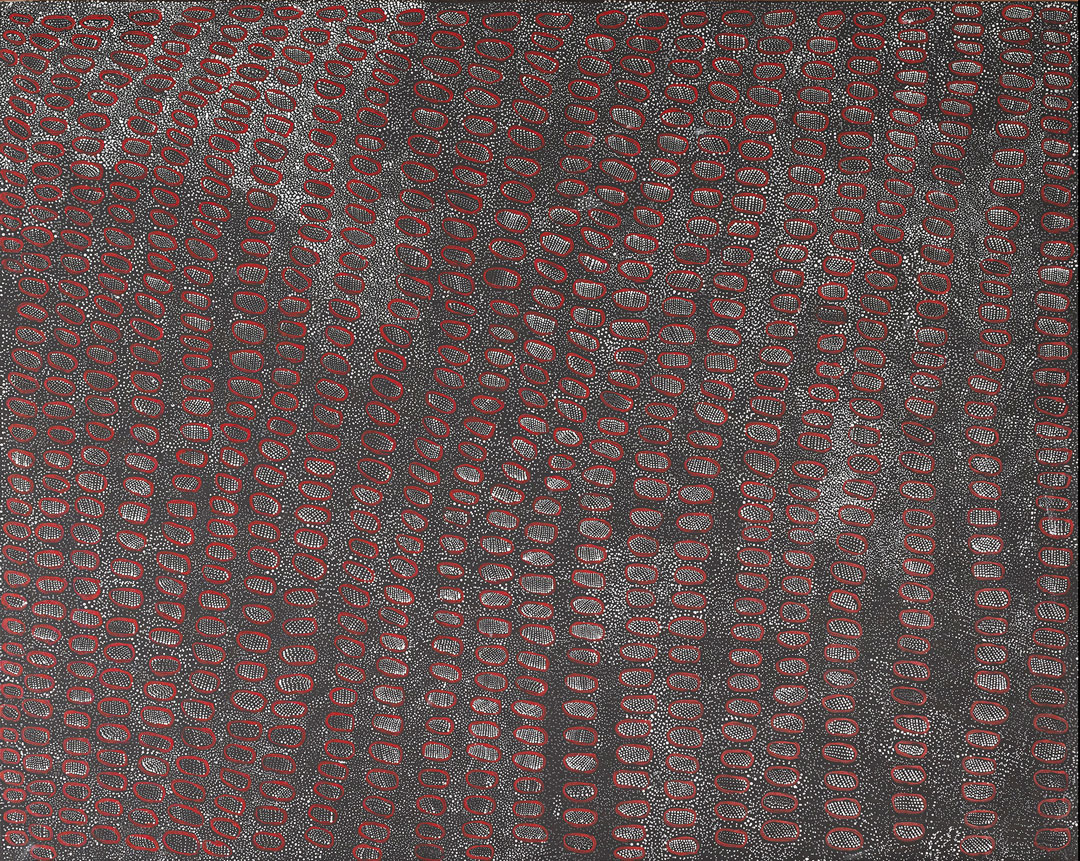Virtual Art Talks: All About Walkabout
As we continue to reflect on the ways that living in quarantine impacts our daily rhythms, Pam McClusky, Curator of African and Oceanic Art, is here to share artwork propelled by walking. Walking becomes one of our rhythms that adjusts to each landscape we cross. Translating that rhythm into paint became a goal for Dorothy Napangardi who walked hundreds of miles across her homeland. She spoke of the unconditional happiness and freedom she felt when she traversed her family’s country and slept beside them with stars as a canopy.
With fewer cars on the roads and the rare airplane in the sky, more of us are walking as a way of getting outside. Often, we are walking without destination, but rather, just to walk. How have you become aware of your surroundings differently on your daily walks? Let the artwork of Dorothy Napangardi, on view in Walkabout at SAM, inspire you to put on your mask and take a stroll through your neighborhood, giving plenty of space to the other pedestrians around you. Maybe your path will follow the one suggested by Pam at the end of the video, and lead you to the Olympic Sculpture Park.
Walkabout: The Art of Dorothy Napangardi at Seattle Art Museum is filled with Napangardi’s paintings from 2000–13 and takes us to the shimmering salt lake, where she absorbed indigenous laws and stories from the land and her family. Visit these large-scale and intricate paintings in person once SAM is able to reopen.
We are humbled by the generosity of our donors during this unique time. Your financial support powers SAM Blog and also sustains us until we can come together as a community and enjoy art in the galleries again. Thanks to a generous group of SAM trustees, all membership and gifts to SAM Fund will be matched up to $500,000 through June 30!
